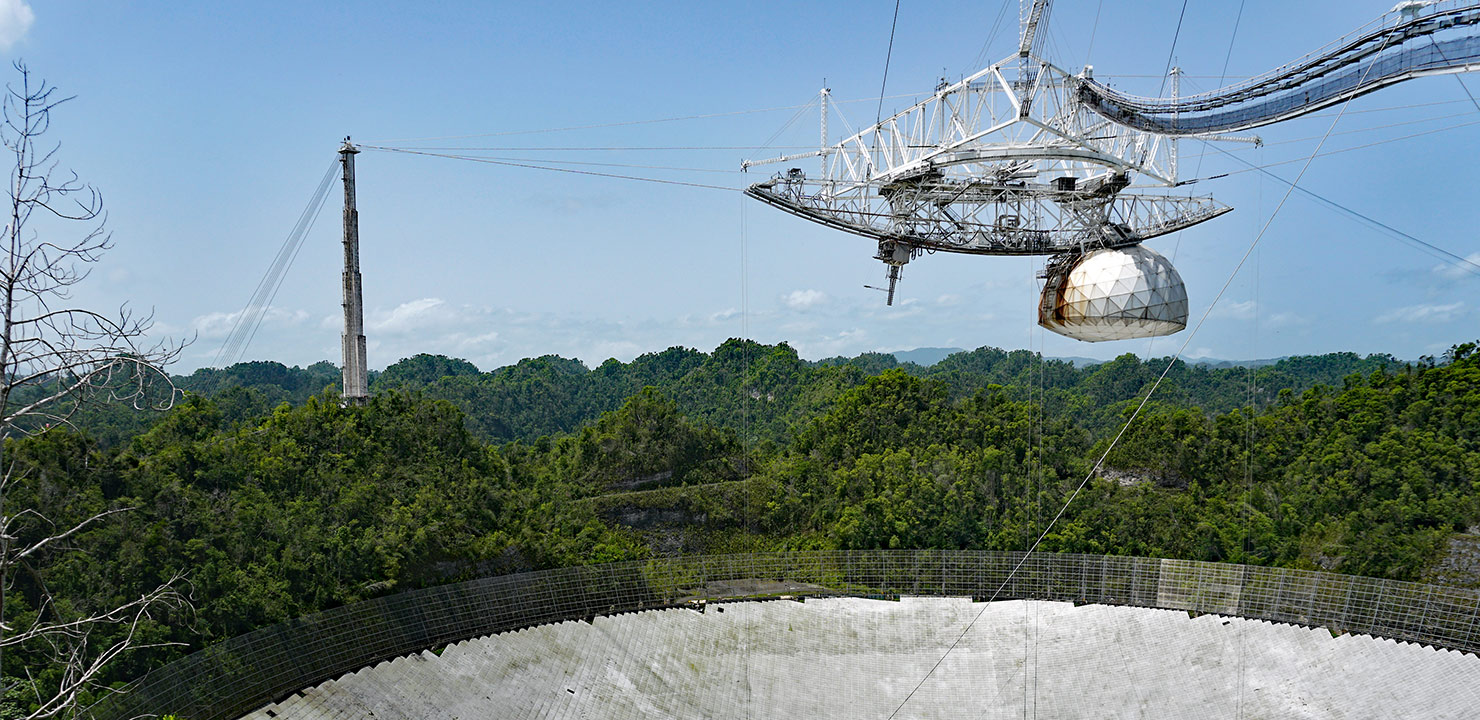
Requiem for a Telescope
February 2021 :
Most of us have either lived most of our lives or all of our lives knowing that just off the coast of the U.S., on a small island not far away, existing in a natural sinkhole, was the largest telescope on Earth, the 1,000-foot radio telescope, Arecibo. For 57 years, since 1963, it was the workhorse of terrestrial astronomy, giving us everything from the surfaces of planets and asteroids, the ability to sense pulsar beacons, to rarified gases between galaxies. For those not into science, per se, it also was highlighted in such movies as Contact and Goldeneye.
Within the Puerto Rican community, 130 worked directly at Arecibo, not to mention the indirect financial potential; also, every child on the island experienced a school field trip to the facility, very often creating the birth of future scientists after seeing the workings of the telescope.
Of course, the major question is: What happened? After 57 years, withstanding decades of earthquakes and hurricanes, what would cause this machine to collapse on a relatively calm winter day? Engineers looking into this believe there might have been inherent flaws that slowly came into play; maintenance funding wasn’t enough to keep it alive; plus, the addition of the 110-ton Gregorian dome in 1997 could have added to the fragility of the suspension cables. Of course, the fall of this dome onto the surface was the last straw in Arecibo’s life.
Fortunately, there are those who are looking forward to the possibility of a rebuild. Many recall the destruction of the 1988 90-meter telescope at Green Bank Observatory, which, through the persuasion of a then influential U.S. senator,made the funding of a replacement happen, resulting in the world’s largest steerable radio dish. In Puerto Rico, however, political clout such as that isn’t as powerful, but there are many advocates thinking of replacing this now second largest telescope (dwarfed by China’s 500-meter Sky Eye) by looking, not only at the National Science Foundation, but also private monies. Already the island’s governor has allocated $8 million to clean up the site and make a replacement design. Perhaps Arecibo isn’t permanently lost, after all. With all that it has contributed to both science and education, it deserves a second coming.
The Future of the Arecibo Observatory: The Next Generation Arecibo Telescope
View of the Arecibo radio telescope prior to collapse, Arecibo Observatory, Puerto Rico by Mario Roberto Durán Ortiz.



